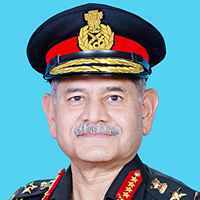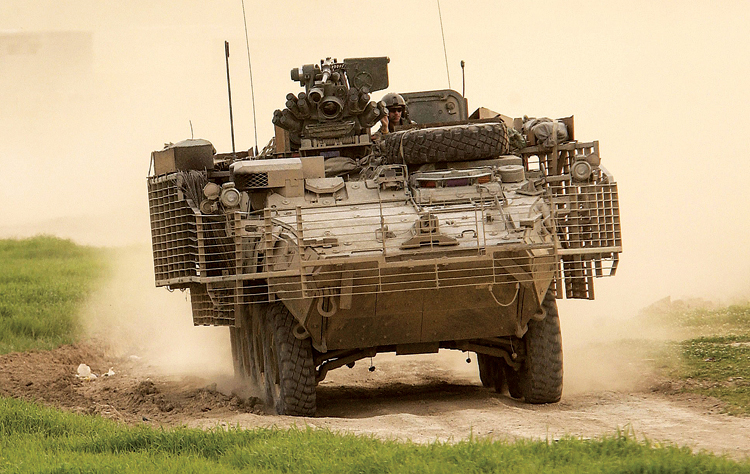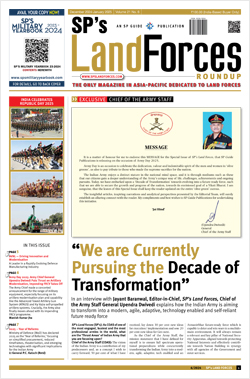INDIAN ARMED FORCES CHIEFS ON OUR RELENTLESS AND FOCUSED PUBLISHING EFFORTS

The insightful articles, inspiring narrations and analytical perspectives presented by the Editorial Team, establish an alluring connect with the reader. My compliments and best wishes to SP Guide Publications.

"Over the past 60 years, the growth of SP Guide Publications has mirrored the rising stature of Indian Navy. Its well-researched and informative magazines on Defence and Aerospace sector have served to shape an educated opinion of our military personnel, policy makers and the public alike. I wish SP's Publication team continued success, fair winds and following seas in all future endeavour!"

Since, its inception in 1964, SP Guide Publications has consistently demonstrated commitment to high-quality journalism in the aerospace and defence sectors, earning a well-deserved reputation as Asia's largest media house in this domain. I wish SP Guide Publications continued success in its pursuit of excellence.
- MoD initiates comprehensive review of Defence Acquisition Procedure 2020, pushes for defence reforms
- G7: The Swansong
- Kalinga Connect: South Asia to Polynesia
- Must Credit DRDO for Operation Sindoor, now what is next for defence R&D?
- The layered Air Defence systems that worked superbly, the key element of Operation Sindoor
- Operation Sindoor | Day 2 DGMOs Briefing
- Operation Sindoor: Resolute yet Restrained
Combat Transportation & Fire Power
The Indian Army plans to augment its armoured mobility through a two-pronged approach, by inducting Stryker Infantry Combat Vehicles (ICVs) co-developed with the US under ‘Make in India’, and by using indigenously designed and developed ICVs by the DRDO in collaboration with indigenous private industry

As has been reported earlier, co-production of the Stryker armoured vehicles in India in conjunction with the US was in the offing. Defence Secretary Giridhar Aramane had said during a joint media briefing with Foreign Secretary Vinay Kwatra on the 2+2 dialogue co-chaired by Defence Minister Rajnath Singh and External Affairs Minister S. Jaishankar and their American counterparts Lloyd Austin and Antony Blinken. “An initial offer on the (Stryker) infantry combat vehicle has come from the US. We have expressed our interest in discussing it further to take the co-production part ahead,” said Aramane. He also said that the proposed deals for the joint production of GE Aerospace’s F414 engines in the country and the acquisition of next-generation armed drones from the US are on track.
Aramane had further said, “Our industrial and military teams will work with their US counterparts and come up with a concrete plan in this regard (joint production of Stryker vehicles.” He also added that discussions on the armoured vehicles were taking place under the roadmap for future defence industrial cooperation concluded by the two countries in June 2023. The roadmap seeks to fast-track technology cooperation and co-production in critical areas such as air combat and land mobility systems; intelligence, surveillance, and reconnaissance; munitions, and the undersea domain.
Concurrently, ‘Nikkei Asia’, reporting on the US-India deal to co-produce the Stryker armoured vehicle in India, had said that India has become a full member of the Middle East naval coalition, thereby expanding its global role.
Stryker ICVs under ‘Make in India’
Recent news reports indicate that the Indian Army is looking at a two-pronged approach to augment its armoured mobility. The planning is to induct the Stryker Infantry Combat Vehicles (ICVs) co-developed with the US under ‘Make in India’, as well as the indigenously designed and developed ICVs by the Defence Research and Development Organisation (DRDO) in concert with indigenous private industry?
The Stryker ICV is a family of eight-wheeled armoured vehicles derived from the Canadian LAV III, while the latter itself was derived from the Swiss Movang Piranha. The US has exported Stryker ICVs to Ukraine, North Macedonia and Thailand. The US is also making efforts to export the Stryker ICV to Bulgaria and Argentina, in addition to India. However, efforts to export the Stryker ICV to Canada, Israel and Lithuania failed.
The Stryker armoured vehicles are manufactured by the US firm General Dynamics Land Systems. The Stryker comes in many variants. With the exception of some specialised variants, the primary armament of the Stryker is a Protector M151 Remote Weapon Station with .50 in (12.7mm) M2 machine gun, 7.62mm M240B machine gun, or 40mm Mk 19 grenade launcher. Some Strykers are fitted with 30mm cannon. The secondary armament is 12.7mm M2 and 7.62mm M240 machine guns (on M1128 Mobile Gun System). The engine is Caterpillar C7 350hp (250 kW). Operational range of the Stryker is 500 km and maximum speed is 97 km/h.
The co-production under ‘Make in India’ will naturally have to meet the specific requirement of the Indian Army. This will include incorporating a more powerful engine to meet the operational demands in the challenging terrains. The Indian Army’s plan reportedly involves the development and production of a limited number of (around 100) Stryker ICVs initially, with potential for further orders up to 300 specially designed for Indian requirements.
A crucial item of the deal includes Transfer of Technology (ToT) to India; to enable domestic production of Stryker ICVs by private Indian companies for a more self-reliant ecosystem. Here the question is whether the US will do ‘complete’ ToT or hold on to part of it in order to continue ‘coproduction’ indefinitely? The doubt remains because in the case of the GE Aerospace’s F414 engine, the critical technology of the inner core is NOT being transferred to India despite the agreement of 100 per cent ToT.
Notably, the US offer for the Stryker ICV first came in 2000 (not in 2023). But India did not take the offer because of the DRDO promise to develop an indigenous FICV, which has been delayed inordinately like most DRDO projects. The co-production of Stryker armoured vehicles also entailed political considerations, timing of which depends on the perception when maximum mileage can be extracted.
Indigenous Development of ICVs
The DRDO has been working on a project to develop the 20-tonne ICV ‘Abhay’ for the Indian Army as a technology demonstrator for the futuristic ICV (FICV), the design for which was completed by 2001. The Armament Research & Development Establishment (ARDE) of the DRDO has completed the task of design, development and Armament integration of ‘Abhay’ in 2023. Technology demonstration of the weapon and ammunition system has been successfully completed according to ARDE.
The pre-production prototype of ‘Abhay’ was rolled out in June 2005 with development of the first armoured prototype in progress. In September 2019, it was announced that the FICV project will be fast tracked. Thereafter in January 2020, the then Army Chief General M.M. Naravane had said that induction of the FICV is scheduled for 2026-27. But this has not been endorsed by the DRDO.
According to recent media inputs, the DRDO is “also” playing a key role, with Tata and Mahindra leading the development of indigenous ICVs. Frankly, this whole exercise reiterates the fact that the private sector would have developed an indigenous ICV or FICV in a much faster timeframe than the DRDO. Ironically, Indian governments have failed to execute because of the DRDObureaucratic nexus, with DRDO playing the goose that lays golden eggs.
A significant development is the Wheeled Armoured Platform (WhAP), also called TATA ‘Kestrel’, jointly produced by Tata Advanced Systems and DRRO, first unveiled during Defexpo 2014. WhAP is 8x8 ICV that has performed well in high-altitude trials. It has more power than the Stryker and is amphibious, which the Stryker is not. In October 2019, the MoD cleared production of WhAP and export to friendly country. The Indian Army reportedly plans to acquire 200 WhAP. The first batch of WhAP was inducted into the Indian Army on April 12, 2022. WhAP can carry 2+9 soldiers compared to 3+8 by Stryker. WhAP’s power-toweight ratio is 25, compared to Stryker’s 17.24. WhAP weighs 24.5 tonnes compared to 20.3 tonone weight of Stryker, but with better power to weight ratio.
Concurrently, the Indian Army is reportedly set to order and quickly receive a new batch of 250 Ashok Leyland GTV 6x6 vehicles, which will provide a significant boost to its firepower and mobility. These high mobility vehicles provide excellent off-road capabilities, allowing for smooth navigation across diverse terrain, especially encountered across the northern borders. Their durability is because of robust materials used to build them and a sturdy design, which enables withstanding rigours of the battlefield. Moreover, they are built for allweather performance.
With a towing capacity of 20 tonnes, these GTV 6x6 all-terrain vehicles are specifically designed to meet the demanding requirement of the Indian Army’s medium artillery and defence (AD) regiments. These sturdy vehicles can haul heavy artillery guns and radar systems critical for battlefield operations; including swiftly deploying and manoeuvring these assets.





